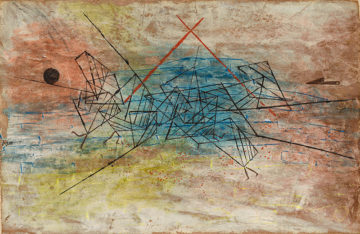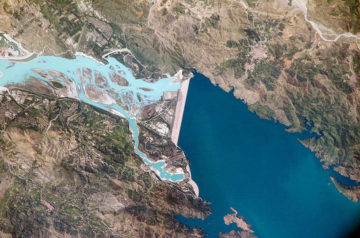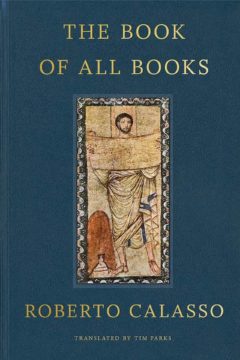Month: April 2022
Gilbert Gottfried (1955 – 2022) Comedian
John Zaritsky (1943 – 2022) Documentary Filmmaker
https://www.youtube.com/watch?v=svk9VWnSfgA&ab_channel=Moconomy
Beyond Eurocentrism
 Ingrid Harvold Kvangraven in Aeon:
Ingrid Harvold Kvangraven in Aeon:
With the publication of Orientalism in 1978, Edward Said would become one of the most influential scholars of our era. The book transformed the study of the history of the modern world, as it offered insights into how racist discourses created and maintained European empires. As much for his political activities, Said and his work attracted a number of Right-wing critics, most notably perhaps Bernard Lewis. Less well known in the West is Samir Amin, the Egyptian economist who coined the term ‘Eurocentrism’. The term comes from Amin’s book Eurocentrism (1988), which criticised Said’s view of empire from the Left and offered an alternative view, one based not on culture or discourse, but on a materialist understanding of capitalism and imperialism.
Said spent most of his career in the Global North, in New York City, while Amin spent his mostly in Africa, attempting to build African academic and political institutions to challenge the dependencies created through imperialism. When I met Amin for an interview back in 2016, he was 85 and still vigorously involved in building alternative institutions and challenging Eurocentric social theory. Although he died in 2018, his legacy remains acutely relevant.
More here.
The Long Now
 Ajay Singh Chaudhary in Late Light:
Ajay Singh Chaudhary in Late Light:
On April 30, 2018, the temperature reached 122.4⁰ Fahrenheit (50.2⁰ Celsius) in Nawabshah, Pakistan, a city of 1.1 million people a mere 127 miles from Karachi, the capital city with approximately 15 million residents. Although Pakistan is a large and varied country geographically speaking, it is the fifth most populous country in the world, with just under 230 million residents. This was not only the hottest April day ever in Nawabshah; it was the hottest April day ever in recorded human history.
Many climate scientists who work on “dangerous heat”—in some ways the most straightforward social impact of global warming—talk about “wet-bulb” temperatures, a combination of heat and humidity measures. And for good reason. Wet-bulb thresholds are much lower (around 32-35⁰C) and are already being crossed all over the world. But even a “dry-bulb” threshold (around 35⁰C) without the compounding issues is “dangerous.” For a few days, maybe even a few hours, 50.2⁰C is deadly.
There is so much to think through with an example like this: from the obvious—climate change, rising temperatures, and its systemic causes—to the less-so: even with mitigation, these are millions of people who can and will move. But what I wish to focus on for the moment are the temporal aspects such blunt empirical realities pose. Horizons seem to fade, a fog descends, the past is churning geologically in the present while if there is a “future,” it is already here.
More here.
Austerity and Renewables
 Lee Harris in Phenomenal World:
Lee Harris in Phenomenal World:
After weeks of rising domestic pressure, a spiraling economic crisis, and the swift loss of crucial military support, Pakistan’s Prime Minister Imran Khan was removed from office last weekend following a vote of no confidence. The political turmoil is the latest in a worrisome series of events in the country—the price of food has risen sharply in recent months, along with gas and other essentials. And Pakistan’s rupee plummeted against the dollar, raising concern that higher bills for basic imports may deplete its dollar reserves.
Khan’s erratic style went from being seen as an asset—bucking pressures from Western lenders—to a liability, as the government reversed course on key policies and contributed to heightened economic instability. In a speech following his election, Khan’s successor, interim Prime Minister Shehbaz Sharif, said the former cricket player and socialite had run a government that was “corrupt, incompetent and laid-back.”
His dismissal comes as the war in Ukraine and rate hikes by the US Federal Reserve pose immense challenges for heavily dollar-indebted developing countries. A late January poll found that two-thirds of Pakistanis considered double-digit inflation to be the biggest problem facing the country. But tens of thousands protested across the streets of major cities on Sunday night, showing their support of Khan and echoing his unsubstantiated claim that the ouster was a result of US meddling.
More here.
How Religion Evolved
Matthew Reisz at The Guardian:
 Robin Dunbar sets out to offer nothing less than “an overarching theory for why and how humans are religious”. Unlike most writers on such themes, he is largely uninterested in the truth or otherwise of religious claims and has little to say about the damage caused by religions, although he does touch on their “militant violence” and the predatory promiscuity we find among the charismatic leaders of small cults. But he is intrigued by the “seeming universality” of religions and their constant tendency to fragment. His stimulating and hugely ambitious book, therefore, uses a variety of different approaches to throw light on three really big questions: “the functions that religion has served”, “the psychological and neurobiological mechanisms that make this possible” and “the timing of the origins of religion”.
Robin Dunbar sets out to offer nothing less than “an overarching theory for why and how humans are religious”. Unlike most writers on such themes, he is largely uninterested in the truth or otherwise of religious claims and has little to say about the damage caused by religions, although he does touch on their “militant violence” and the predatory promiscuity we find among the charismatic leaders of small cults. But he is intrigued by the “seeming universality” of religions and their constant tendency to fragment. His stimulating and hugely ambitious book, therefore, uses a variety of different approaches to throw light on three really big questions: “the functions that religion has served”, “the psychological and neurobiological mechanisms that make this possible” and “the timing of the origins of religion”.
At the emotional heart of religion, as Dunbar sees it, is something he calls “the mystical stance”, which includes “a susceptibility to enter trance-like states”, “belief in a transcendental (or spirit) world” and “a belief that we can call on hidden power(s) to help us”.
more here.
On Roberto Calasso’s “The Book of All Books”
Dan Turello at the LARB:
 Instead of following the well-worn path of thinking about Abraham as the father of a nation, we are presented with a traveling herder about whom we know nothing other than that he had a beautiful wife. Calasso points out that among “the many causes of bafflement scholars come up against in the Bible one of the most glaring is the fact that there are three occasions in Genesis when a man tries to pass off his wife as his sister.” Recalling these episodes alongside the accounts of fathers willing to send out their daughters to be raped by mobs casts these men in rather unflattering light. But more importantly, it raises the question of how the books of the Bible were assembled, how and why stories were included or deleted. The “main author of the Bible,” writes Calasso, “could be thought of as the unknown Final Redactor, who thus becomes responsible for all the innumerable occasions of perplexity that the Bible is bound to provoke in anyone.” This seems to be the interpretative crux. The Bible continues to inspire our cultural and religious imaginary. The question is not whether to read it — it is how we read it.
Instead of following the well-worn path of thinking about Abraham as the father of a nation, we are presented with a traveling herder about whom we know nothing other than that he had a beautiful wife. Calasso points out that among “the many causes of bafflement scholars come up against in the Bible one of the most glaring is the fact that there are three occasions in Genesis when a man tries to pass off his wife as his sister.” Recalling these episodes alongside the accounts of fathers willing to send out their daughters to be raped by mobs casts these men in rather unflattering light. But more importantly, it raises the question of how the books of the Bible were assembled, how and why stories were included or deleted. The “main author of the Bible,” writes Calasso, “could be thought of as the unknown Final Redactor, who thus becomes responsible for all the innumerable occasions of perplexity that the Bible is bound to provoke in anyone.” This seems to be the interpretative crux. The Bible continues to inspire our cultural and religious imaginary. The question is not whether to read it — it is how we read it.
more here.
Romanticism – In Search of a Definition (Isaiah Berlin 1965)
Saturday Poem
He Thanks His Woodpile
The wood of the madrone burns with a flame at once
lavender and mossy green, a color you sometimes see in a sari.
Oak burns with a peppery smell.
For a really hot fire, use bark.
You can crack your stove with bark.
All winter long I make wood stews:
Poem to stove to woodpile to stove to
typewriter. Woodpile. Stove.
and can’t stop peeking at it!
can’t stop opening up the door!
can’t stop giggling at it
“Shack Simple”
crazy as Han Shan as
Wittgenstein in his German hut, as
all the others ever were and are
………………. Ancient Order of the Fire Gigglers
who walked away from it, finally,
kicked the habit, finally, of Self, of
man-hooked Man
………………. ( which is not, at last, estrangement )
by Lew Welch
from Ring of Bone
Grey Fox Press, 1960
A Lake in Florida Suing to Protect Itself
Elizabeth Kolbert in The New Yorker:
 Lake Mary Jane is shallow—twelve feet deep at most—but she’s well connected. She makes her home in central Florida, in an area that was once given over to wetlands. To the north, she is linked to a marsh, and to the west a canal ties her to Lake Hart. To the south, through more canals, Mary Jane feeds into a chain of lakes that run into Lake Kissimmee, which feeds into Lake Okeechobee. Were Lake Okeechobee not encircled by dikes, the water that flows through Mary Jane would keep pouring south until it glided across the Everglades and out to sea.
Lake Mary Jane is shallow—twelve feet deep at most—but she’s well connected. She makes her home in central Florida, in an area that was once given over to wetlands. To the north, she is linked to a marsh, and to the west a canal ties her to Lake Hart. To the south, through more canals, Mary Jane feeds into a chain of lakes that run into Lake Kissimmee, which feeds into Lake Okeechobee. Were Lake Okeechobee not encircled by dikes, the water that flows through Mary Jane would keep pouring south until it glided across the Everglades and out to sea.
Mary Jane has an irregular shape that, on a map, looks a bit like a woman’s head in profile. Where the back of the woman’s head would be, there’s a park fitted out with a playground and picnic tables. Where the face would be, there are scattered houses, with long docks that teeter over the water. People who live along Mary Jane like to go boating and swimming and watch the wildlife. Toward the park side of the lake sits an islet, known as Bird Island, that’s favored by nesting egrets and wood storks. Like most of the rest of central Florida, Mary Jane is under pressure from development. Orange County, which encompasses the lake, the city of Orlando, and much of Disney World, is one of the fastest-growing counties in Florida, and Florida is one of the fastest-growing states in the nation. A development planned for a site just north of Mary Jane would convert nineteen hundred acres of wetlands, pine flatlands, and cypress forest into homes, lawns, and office buildings.
In an effort to protect herself, Mary Jane is suing.
More here.
Play and Devotion with Oliver Sacks
Lawrence Weschler in Orion Magazine:
 As a student at St. Paul’s Academy in London, Oliver Sacks founded a tremendously successful literary society. It quickly eclipsed the staid Milton Society, “which had been founded at St. Paul’s, years earlier, by Milton himself,” he says. “We were a ravenous Jewish overgrowth,” he goes on, “and one day the headmaster called me in and said, ‘Sacks, you’re dissolved, you don’t exist,’ as simple as that—a phrase that has persisted within me, hauntingly, through the years.” Talking about St. Paul’s, which “used to be in Hammersmith, in a magnificent Gothic monstrosity,” to which Oliver would bike or bus (“the 28, the bus of my childhood, whose fare has in the meantime jumped from one penny to forty pence”), puts him in mind of the Natural History Museum in nearby South Kensington, which he would often skirt on the way to and from school—and he proposes we head over for a visit.
As a student at St. Paul’s Academy in London, Oliver Sacks founded a tremendously successful literary society. It quickly eclipsed the staid Milton Society, “which had been founded at St. Paul’s, years earlier, by Milton himself,” he says. “We were a ravenous Jewish overgrowth,” he goes on, “and one day the headmaster called me in and said, ‘Sacks, you’re dissolved, you don’t exist,’ as simple as that—a phrase that has persisted within me, hauntingly, through the years.” Talking about St. Paul’s, which “used to be in Hammersmith, in a magnificent Gothic monstrosity,” to which Oliver would bike or bus (“the 28, the bus of my childhood, whose fare has in the meantime jumped from one penny to forty pence”), puts him in mind of the Natural History Museum in nearby South Kensington, which he would often skirt on the way to and from school—and he proposes we head over for a visit.
On the drive, he explains how, though his romance with motorcycles began in adolescence, he really only got his first one on his twenty-first birthday. During his last six months in England, stationed for a residency in Birmingham, he would gun his black Norton down the Birmingham–London highway. Eventually, as virtually his last act in England—he starts to laugh at the memory—he “stepped o=” his bike, at eighty miles an hour, slid a hundred yards on the slippery road, and survived, protected by his leather swaddling. (The bike was destroyed.)
Then, the minute he got to America, he got another, “an off-road scrambler.”
Arriving at the Natural History Museum, a huge and imposing stone secular cathedral built in high confident Victorian Gothic, Oliver relates, as we approach the ramp, “Beneath the visible museum, there was a vast underground one, crammed with anatomical samples. The New Spirit Building, it was called; I was a frequent visitor. The place used to be so unpopular, it was a delight. There were no concessions to popular presentation,” he says, punning.
More here.
Psychedelics Show Promise as a Treatment for Alcoholism
Michaela Haas in Reasons to be Cheerful:
 Ralph Gerber* has tried nearly everything a wealthy alcoholic can try during two decades of excessive drinking: half a dozen stints in rehab, Alcoholics Anonymous, even a shaman-led quest through the Arizona desert. Each time, the treatments got him sober, yet the 48-year-old real estate broker in Los Angeles kept relapsing. His divorce, problems at his firm, the Covid lockdowns — there was always a trigger that sent him back to the gin.
Ralph Gerber* has tried nearly everything a wealthy alcoholic can try during two decades of excessive drinking: half a dozen stints in rehab, Alcoholics Anonymous, even a shaman-led quest through the Arizona desert. Each time, the treatments got him sober, yet the 48-year-old real estate broker in Los Angeles kept relapsing. His divorce, problems at his firm, the Covid lockdowns — there was always a trigger that sent him back to the gin.
In the spring of 2021, he decided to try a path that is not entirely legal. He flew to Denver, Colorado, to take a dose of psilocybin, the hallucinogenic component in magic mushrooms. “It was a journey into my innermost core,” is how Gerber describes the six-hour experience. “I felt flooded with love and was able to get in touch with long-suppressed feelings.” Six months later, he made the trip again for a second session. “I have been sober ever since,” he says proudly, half confident he’s reached the end of his addiction, half fearful the effects might eventually wear off.
More here.
The AI protein-folding revolution
Ewen Callaway in Nature:
 For more than a decade, molecular biologist Martin Beck and his colleagues have been trying to piece together one of the world’s hardest jigsaw puzzles: a detailed model of the largest molecular machine in human cells.
For more than a decade, molecular biologist Martin Beck and his colleagues have been trying to piece together one of the world’s hardest jigsaw puzzles: a detailed model of the largest molecular machine in human cells.
This behemoth, called the nuclear pore complex, controls the flow of molecules in and out of the nucleus of the cell, where the genome sits. Hundreds of these complexes exist in every cell. Each is made up of more than 1,000 proteins that together form rings around a hole through the nuclear membrane.
These 1,000 puzzle pieces are drawn from more than 30 protein building blocks that interlace in myriad ways. Making the puzzle even harder, the experimentally determined 3D shapes of these building blocks are a potpourri of structures gathered from many species, so don’t always mesh together well.
More here.
Western Dissent from US/NATO Policy on Ukraine is Small, Yet the Censorship Campaign is Extreme
Glenn Greenwald in his Substack newsletter:
 If one wishes to be exposed to news, information or perspective that contravenes the prevailing US/NATO view on the war in Ukraine, a rigorous search is required. And there is no guarantee that search will succeed. That is because the state/corporate censorship regime that has been imposed in the West with regard to this war is stunningly aggressive, rapid and comprehensive.
If one wishes to be exposed to news, information or perspective that contravenes the prevailing US/NATO view on the war in Ukraine, a rigorous search is required. And there is no guarantee that search will succeed. That is because the state/corporate censorship regime that has been imposed in the West with regard to this war is stunningly aggressive, rapid and comprehensive.
On a virtually daily basis, any off-key news agency, independent platform or individual citizen is liable to be banished from the internet. In early March, barely a week after Russia’s invasion of Ukraine, the twenty-seven nation European Union — citing “disinformation” and “public order and security” — officially banned the Russian state-news outlets RT and Sputnik from being heard anywhere in Europe. In what Reuters called “an unprecedented move,” all television and online platforms were barred by force of law from airing content from those two outlets. Even prior to that censorship order from the state, Facebook and Google were already banning those outlets, and Twitter immediately announced they would as well, in compliance with the new EU law.
But what was “unprecedented” just six weeks ago has now become commonplace, even normalized.
More here.
David Bowie’s Advice to Young Artists
A New Biography of Czesław Miłosz
Cory Oldweiler at the LARB:
 Haven draws on a compendious knowledge of her subject, having mused on and written about Miłosz for more than 20 years. She met with the man himself on two occasions in early 2000, visits that turned out to be his last interviews in the United States, and since then she has talked with his translators, including Robert Hass, Lillian Vallee, and Peter Dale Scott; his family, including his son, Anthony, and his brother-in-law, Bill Thigpen; and his friends, including Mark Danner, who purchased Miłosz’s longtime home on Grizzly Peak. She has also edited two prior volumes on Miłosz, one collection of interviews and one of essays; has penned dozens of blog posts relating to him on her fecund website, The Book Haven; and has written numerous articles about him, including a 2013 essay for Quarterly Conversation entitled “Miłosz as California Poet,” which can be read as an urtext for A California Life.
Haven draws on a compendious knowledge of her subject, having mused on and written about Miłosz for more than 20 years. She met with the man himself on two occasions in early 2000, visits that turned out to be his last interviews in the United States, and since then she has talked with his translators, including Robert Hass, Lillian Vallee, and Peter Dale Scott; his family, including his son, Anthony, and his brother-in-law, Bill Thigpen; and his friends, including Mark Danner, who purchased Miłosz’s longtime home on Grizzly Peak. She has also edited two prior volumes on Miłosz, one collection of interviews and one of essays; has penned dozens of blog posts relating to him on her fecund website, The Book Haven; and has written numerous articles about him, including a 2013 essay for Quarterly Conversation entitled “Miłosz as California Poet,” which can be read as an urtext for A California Life.
That essay opens in the winter of 1948–’49, with Miłosz sitting in a canoe on a Pennsylvania river, waiting for beavers and contemplating defecting to the United States, as one does.
more here.
Czesław Miłosz: A California Life – A Conversation with Cynthia Haven
What One Does: Rainer/Aristotle/Welling
Walter Benn Michaels at nonsite:
 In 1968, Yvonne Rainer wrote an essay criticizing “much of the western dancing we are familiar with” for the way in which, in any given “phrase,” the “focus of attention” is “the part that is the most still” and that registers “like a photograph.”1 Her problem was not the standard complaint that the movement essential to dance is falsified by a still photograph. It was instead that the western dancing she wanted to break away from had the aesthetic of the still photograph built into it—it was already too photographable. What she wanted instead was a dance that refused that aesthetic, that really would be falsified by being photographed. In 1971, James Welling started taking dance classes at the University of Pittsburgh. When, the following year, he started at Cal Arts, he made the decision to become an artist instead of a dancer, but he continued to be interested in dance and especially in Rainer’s essay, which he “read and reread,”2 even as his decision to become an artist turned more specifically into the decision to become a photographer. And much later, in 2014, realizing that he “wasn’t finished with dance,” he began making still photographs of dance performances.
In 1968, Yvonne Rainer wrote an essay criticizing “much of the western dancing we are familiar with” for the way in which, in any given “phrase,” the “focus of attention” is “the part that is the most still” and that registers “like a photograph.”1 Her problem was not the standard complaint that the movement essential to dance is falsified by a still photograph. It was instead that the western dancing she wanted to break away from had the aesthetic of the still photograph built into it—it was already too photographable. What she wanted instead was a dance that refused that aesthetic, that really would be falsified by being photographed. In 1971, James Welling started taking dance classes at the University of Pittsburgh. When, the following year, he started at Cal Arts, he made the decision to become an artist instead of a dancer, but he continued to be interested in dance and especially in Rainer’s essay, which he “read and reread,”2 even as his decision to become an artist turned more specifically into the decision to become a photographer. And much later, in 2014, realizing that he “wasn’t finished with dance,” he began making still photographs of dance performances.
more here.
Friday Poem
In days threatened by disease and war the still quiet
of ordinary boredom might seem desirable.
………………………………………………. —Roshi Bob
Northeast Regional
The all-seats-filled Thursday 3:26
from Boston to New York speeds along
the same familiar route
through tiny Connecticut towns
whose pulse beats only in the narrow corridor
between tracks and docks:
Mystic, New London, Old Saybrook.
They are the kind of New England fishing town
one would imagine from a Longfellow poem,
half-hidden under coastal mist,
where the moisture in the air
creates halos around neon signs on the row of stores
that provide the communities essentials.
—Nails, Pizza, Karate—
where the driftwood that knocks at the hull of moored boats,
the smell of the sea’s salty brine
and the metallic twang of wires
slapping the mast of rocking sailboats
are lost to the traveler
behind the thick-paned windows of the train,
where the steady tedium of clanking rail
is broken only by the sight of the lone seagull
whose ghostly silhouette
glides against the descending dusk.
by Sassan Tabatabai
from Uzunburun
The Pen & Anvil Press, 2011
